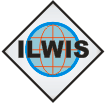 Last week I showed some (very) limited snap shots of the new user interface for Ilwis4. But the user interface is just one part of the Ilwis-objects framework. In fact, it isn’t the first major “client” we wrote for the framework. The first thing we did after the major parts of the core of the framework were written was write a Python interface.more >
Last week I showed some (very) limited snap shots of the new user interface for Ilwis4. But the user interface is just one part of the Ilwis-objects framework. In fact, it isn’t the first major “client” we wrote for the framework. The first thing we did after the major parts of the core of the framework were written was write a Python interface.more >
WPS-Ilwis Bridge – Final Post
The goal of this Google Summer of Code project was to create a bridge between Ilwis-objects and the 52°North WPS by adding Ilwis-objects as a processing backend. With this WPS extension, users can carry out ILWIS commands on a remote server via the WPS service interface.
more >
The new user interface
Last week I talked a little bit about the changes in the data structures. This week I want to show a little bit about the changes in the desktop client’s user interface (UI). When designing the UI, I tried to stay close to the general principle of the ILWIS 3 UI on the one hand, and to modernize and improve those parts that needed improvement on the other hand.more >
Ilwis-objects; The changes
Last week I wrote about all the things we wanted to achieve for the next version of ILWIS. The question is of course, how realistic is this? I mean, the current ILWIS is collaberative effort over many years. There is a huge amount of knowledge, experience and work involved that is not easily reproducable. The original group that produced ILWIS doesn’t exist anymore (I was part of it) and the resources have been severely reduced. On the other hand, in the landscape of software development, there have been fundamental changes that are very beneficial to this undertaking. The rise of open source software is a very big boon and the frameworks for building UI’s have become much more convenient to use. And, to my (sort of at least) surprise, the core design of the ILWIS 2&3 data structures was, with some adaptations, still very usuable in the modern context; a tribute to the original designers (no, not me, before my time).
It is this organization of data and its changes that I want to talk about in this blog, not the nitty, gritty C++ that is the core of Ilwis, but more on the level that users will encounter. After all, this is the basis on which the rest of ILWIS is built.more >